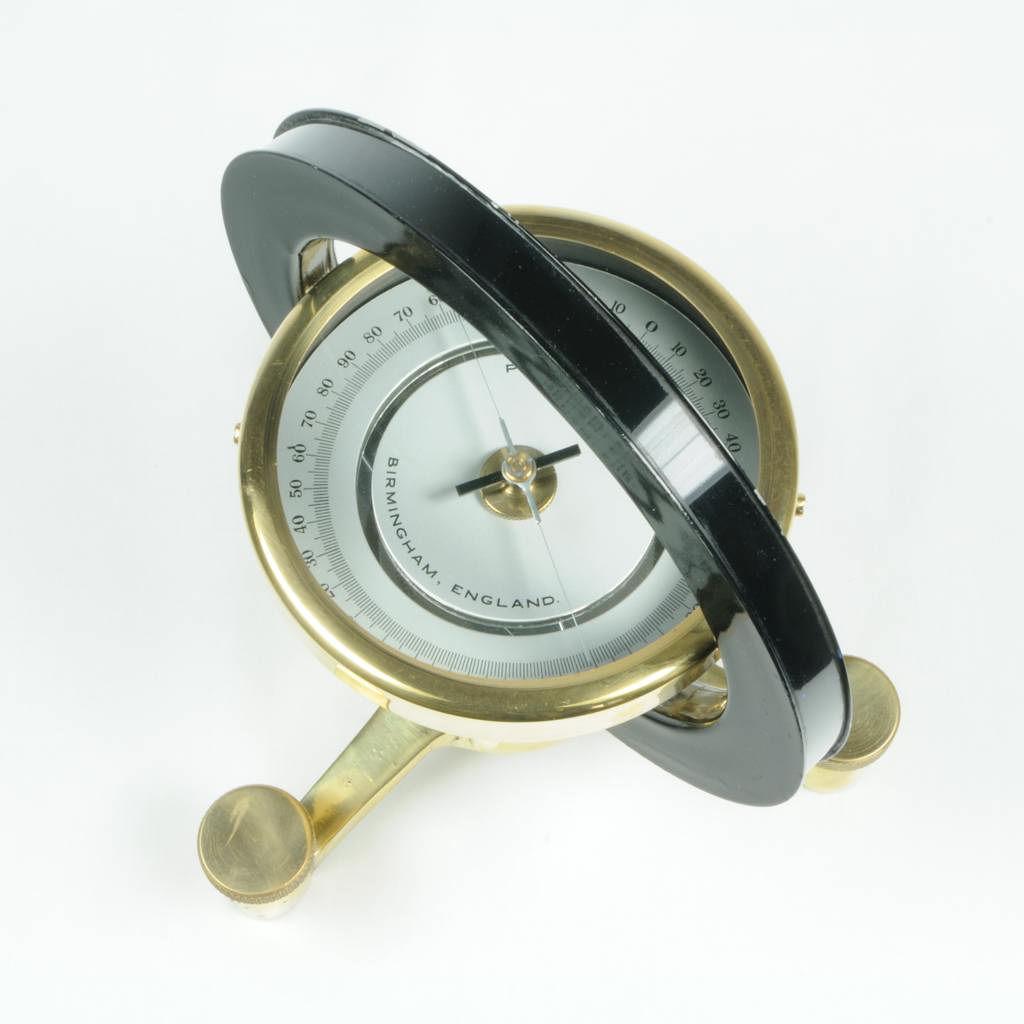What physical phenomenon does the relationship #B_(galv) = (mu_0iN)/(2r)#?
1 Answer
Whenever current passes through a conducting coil, it produces a magnetic field around it. How to calculate the magnetic field. Alternatively, find out the current which produced this magnetic field.
Explanation:

The picture is of a Tangent galvanometer.
It consists of a coil of insulated copper wire which is wound around a non-magnetic circular frame. The coil can be rotated on a vertical axis passing through its center. A compass box is mounted at the center of a circular scale. A tiny powerful magnetic needle is placed at the center of the coil. The magnetic needle is free to rotate in the horizontal plane.
A thin aluminum pointer is attached to the needle at its center and at right angle to it. The frame is mounted vertically on a horizontal base provided with leveling screws. It gets its name from tangent law of magnetism. Which states that the tangent of the angle
The tangent galvanometer is placed so that the plane of the coil is vertical and is aligned with the parallel to the horizontal component of the Earth's magnetic field
#B=(mu_0 Ni)/ (2r)# .......(1)
#mu_0# being permeability of free space or vacuum permeability
The compass needle points along the direction of the vector resultant
#theta = tan^{-1} (B/{B_H})# ......(2)
Rewriting (1) in terms of horizontal component of earth's magnetic field
#(mu_0 Ni)/( 2r) = B_H tantheta#
or#i=((2rB_H)/(mu_0 N))tantheta# .......(3)
We see that the quantity
